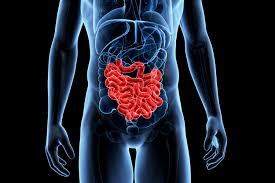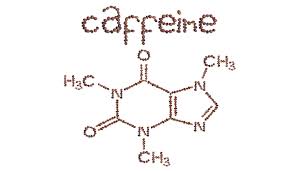Coffee, titanic towards the devil's iceberg
 It is estimated that in Croatia more than 50% of the population regularly drinks coffee. Those who use brown potions are on a Titanic course towards the Devil's Iceberg. Symptoms usually start to appear only after a lot of damage has already been done "below the surface". But it's worth the time and effort to investigate the hidden problems of brown drinks. For years we heard that coffee "opens the eyes", but now we really want to open our eyes about the dangers lurking in a cup of coffee.
It is estimated that in Croatia more than 50% of the population regularly drinks coffee. Those who use brown potions are on a Titanic course towards the Devil's Iceberg. Symptoms usually start to appear only after a lot of damage has already been done "below the surface". But it's worth the time and effort to investigate the hidden problems of brown drinks. For years we heard that coffee "opens the eyes", but now we really want to open our eyes about the dangers lurking in a cup of coffee.
Methylxanthine increases the accumulation of AMP (adenosine monophosphate)
In addition to a large number of other harmful effects, methylxanthines also cause an increased accumulation of cyclic AMP (adenosine monophosphate) in body cells, a substance that is necessary for the production of energy in the body. There is an “increased secretion (of cyclic AMP) in the jejunum (the second part of the small intestine) that lasts at least 15 min after consuming caffeine in amounts close to the amount in brown drinks or drugs. Basic absorption in the jejunum is 0.5 ml of secretion per cm of jejunum/h. The rate of absorption increases by taking a cup of hot chocolate or coffee, so that excretion becomes 6.0 ml per cm¬ jejunum/h! That's a 12-fold increase. Caffeine also disrupts excretion in the ileum (the last part of the small intestine). It is possible that small bowel secretions induced by methylxanthines may play a role in the symptoms experienced by some patients with functional diarrhea (diarrhea).
In other words…
... when a person drinks black tea, coffee, Coca-Cola or chocolate, the entire small intestine can 1200% more efficiently absorb this substance – called cyclic AMP – which produces energy. Most people would think that sounds great, but it's somewhat like putting mothballs in a tank of gasoline. You can get a lot more power for a short while, but you'll ruin the engine in no time. It's only natural that you wouldn't want to do something to the vehicle that could result in a large repair bill. But how much are you willing to pay for your heart attack or to try to remove the cancer?
absorb this substance – called cyclic AMP – which produces energy. Most people would think that sounds great, but it's somewhat like putting mothballs in a tank of gasoline. You can get a lot more power for a short while, but you'll ruin the engine in no time. It's only natural that you wouldn't want to do something to the vehicle that could result in a large repair bill. But how much are you willing to pay for your heart attack or to try to remove the cancer?
Caffeine is classified as one of the most popular substances
Caffeine is classified as one of the most popular mind-altering substances in the United States today, along with nicotine and alcohol. Many people feel less alert, less satisfied, sleepier and more irritable when they are in a period of withdrawal from caffeine. There are at least 100 harmful chemicals in coffee, including acetaldehyde, acetic acid, ammonia, carbon disulfide, catechol, ethanol, methanol, naphthalene, phenol, and hydrogen sulfide, which combine to make your body an unconscious and perhaps unwilling pharmacist.
 Caffeine stimulates all parts of the cerebral cortex. The lethal dose is 10 g, which is the amount found in about 70 cups of coffee. many people take 1/10 of the lethal dose every day, and even a single cup of coffee contains substances that seriously alter the body. Women who drink only one cup of coffee a day are almost three times more likely to get pelvic cancer than women who don't drink coffee! In 13 out of 14 women who drank 7 or more cups of coffee a day during pregnancy, miscarriages, fetal deaths or stillbirths occurred. (1) The increased risk also occurs in men.
Caffeine stimulates all parts of the cerebral cortex. The lethal dose is 10 g, which is the amount found in about 70 cups of coffee. many people take 1/10 of the lethal dose every day, and even a single cup of coffee contains substances that seriously alter the body. Women who drink only one cup of coffee a day are almost three times more likely to get pelvic cancer than women who don't drink coffee! In 13 out of 14 women who drank 7 or more cups of coffee a day during pregnancy, miscarriages, fetal deaths or stillbirths occurred. (1) The increased risk also occurs in men.
Caffeine is rapidly and completely absorbed from the gastrointestinal tract and passes through the central nervous system with an average half-life of 3.5 to 4 hours. The half-life is the time it takes for the body to get rid of the poison or drug. Even when the body's defense mechanisms break down the substance, the damage is not stopped since the breakdown products of caffeine are also toxic. They interfere with the enzyme that converts adenosine monophosphate, a necessary chemical in the body's energy cycle, resulting in a decrease in energy. The person is then nervous. So essentially caffeine has a roller coaster effect on the unwitting victim: First there's the cheap stimulant effect created by caffeine-induced absorption of cyclic AMP, and then the resulting descent when the breakdown products of caffeine block the body's energy production.
The slide continues as calcium levels drop and phosphorus rises after the breakdown of caffeine. Now it is  a disturbed balance of nutrients joins other problems, causing an increased risk of clot formation, abnormalities, thinning of bones, nervous fatigue and mental problems such as depression.
a disturbed balance of nutrients joins other problems, causing an increased risk of clot formation, abnormalities, thinning of bones, nervous fatigue and mental problems such as depression.
Restlessness and the person's inability to concentrate are other symptoms that appear only a few hours after the intake is stopped. Although caffeine has been said to increase concentration, this is only temporary. The overall effect is a reduction in the ability to concentrate due to the disruption of the brain and body's energy systems and the short duration of the stimulatory effect. (2) Long-term memory is impaired for certain data and events, and work ability and professional progress are not as good in people who drink coffee as in those who do not. they don't drink it. (3)
Does caffeine improve muscle activity?
Athletes often use caffeine to enhance the use of fat as fuel for longer-term muscular activity, thereby saving sugar that can be used for sudden, explosive additional activity, or so in theory. But it is enough to overdo it a little and caffeine interferes with abilities, leads to nervousness, fluid loss and increased risk of other emotional problems.(4)
Caffeine is a tasteless chemical and is a constituent of a number of plants including coffee, black tea, cola fruit, and cocoa. Some pain relievers contain aspirin and 15 to 30 mg of caffeine. Certain preparations for maintaining alertness contain up to 110 mg of caffeine per tablet. (5)
Caffeine narrows the arteries
 Caffeine acts as a direct stimulant of the heart muscle. By direct action, it relaxes the bronchi. It has a diuretic effect (it tends to increase the flow of urine) by disrupting the function of the renal tubules and directly causes the expansion of blood vessels and capillaries in the skin, especially the nose, by direct action on the arterioles. When it reaches the heart, unfortunately, instead of widening, it causes the arteries to narrow, which is a very undesirable feature. Caffeine stimulates the medulla oblongata, affecting the respiratory center. (6) It also increases the workload of the heart by accelerating its work rate and increasing blood pressure – simultaneously reducing blood supply to the heart and making it harder for the heart to work.
Caffeine acts as a direct stimulant of the heart muscle. By direct action, it relaxes the bronchi. It has a diuretic effect (it tends to increase the flow of urine) by disrupting the function of the renal tubules and directly causes the expansion of blood vessels and capillaries in the skin, especially the nose, by direct action on the arterioles. When it reaches the heart, unfortunately, instead of widening, it causes the arteries to narrow, which is a very undesirable feature. Caffeine stimulates the medulla oblongata, affecting the respiratory center. (6) It also increases the workload of the heart by accelerating its work rate and increasing blood pressure – simultaneously reducing blood supply to the heart and making it harder for the heart to work.
Caffeine worsens diabetes, the work of the heart muscle...
The effect of caffeine on pancreatic cells also worsens diabetes. In experiments on mice, coffee greatly worsens diabetes. (7) Caffeine disrupts the glucose tolerance test, especially during pregnancy. (8) It can be considered a risk factor for diabetes. (9) Caffeine predicts extra heartbeats and accelerates the heart rate. It increases blood pressure, disturbs sleep and increases the level of free fatty acids in the blood. (10) Chlorogenic acid in coffee causes the most intense food allergies encountered in medical practice. There is evidence that fluid retention is a side effect of caffeine. One patient had a fluid retention problem for 10 years, which immediately disappeared when she stopped drinking coffee. Within 5 days, she reported that she had not felt more relaxed in years and that her fluid retention problem had disappeared.(11)
Coffee causes dizziness, instability in the legs, depression, nervousness...
Coffee causes dizziness, instability in the legs, depression, nervousness, irritability, problems with circulation, pelvic and ovarian cancer, birth defects, and stomach ulcers. (12,13,14,15) The use of caffeinated beverages and cold and headache medications that contain caffeine is also associated with the development of premenstrual syndrome (PMS), according to in a study of 295 Boston College students. (16) People who drink coffee, compared to those who do not drink it, have a higher percentage of excess weight, use more alcohol and smoke more cigarettes. (17)
circulation, pelvic and ovarian cancer, birth defects, and stomach ulcers. (12,13,14,15) The use of caffeinated beverages and cold and headache medications that contain caffeine is also associated with the development of premenstrual syndrome (PMS), according to in a study of 295 Boston College students. (16) People who drink coffee, compared to those who do not drink it, have a higher percentage of excess weight, use more alcohol and smoke more cigarettes. (17)
Coffee is the main source of caffeine used in the world today. Caffeine is also found in Coca-Cola, black tea and chocolate. The Cafe Mundial organization controls 59% of the 4.5 billion $ annual trade in coffee, the second largest commodity in world trade (right after oil). Its sales explain the fact that this unhealthy drink continues to contribute greatly to complex diseases in this country (America). The revenue generated does not even come close to covering the cost of treating the diseases caused by coffee.
In one experiment using a test dose of 250 mg (note that just one cup of coffee contains 100-160 mg) caffeine increased plasma renin activity by 57%, plasma norepinephrine by 75%, and plasma epinephrine by 207%.(18) These substances they represent kidney hormone, brain hormone and adrenal hormone. The interaction of all these hormones produces a favorable condition for increased production of fat in the blood and all this just by drinking one cup of coffee. (19) Researchers have established a link between the use of two or more cups of coffee per day and elevated cholesterol levels. 8 or more cups of coffee a day can cause nervousness, fear, nausea and agitation in patients suffering from psychological disorders (panic). A third study showed that drinking 5 or more cups of coffee a day increases the risk of heart problems 2.8 times (20,21,22).
Coffee is picked green and roasted to make it black. Now imagine doing the same process with your baked potatoes? Let's use common sense...
If you have a headache when you stop drinking coffee, you should increase your fluid intake by 0.5L or even 1L + of course your minimum that you should drink every day and the headaches will disappear very quickly. If it is difficult for you to give up coffee, drink Divka grain coffees, etc.
Coffee Video:
1 part.https://www.youtube.com/watch?v=66OhVqbi_So
2.part https://www.youtube.com/watch?v=rUOvXEmkAbo
To get an accurate calculation of how much fluid you should drink while resting, divide your body weight by thirty (kg of body mass: 30 and that's the minimum) For example, if you are 60 kg :30= 2L. So, you should drink 2 liters of water throughout the day.
If you have a small urination at night and it deprives you of normal sleep, drink the last water until 18, 17 or even 4: 00.
Source: Dr. Agata Tres, Poison with a capital K
Literature:
- Medical World News, Jan 26, 1976, pp. 63-73.
2 Journal of the American Medical Association 7 1:240, Sept. in 1977
3 Internal Medicine News, April 14, 1984
4 The Physician and Sports Medicine 13(5):191, 1985.
5 FDA Fact Sheet, July 1971.
6 Pharmacology Notes, 1953.
7 Medical World News, Feb. 19, 1965, p. 33.
8 Diabetes Outlook, March 1969.
9 Hospital Tribune Dec. 16, 1968 p. 2.
10 Journal of the American Medical Association 231:965, March 3, 1975.
11 Journal of the American Medical Association Oct. 25, 1971, 218:596.
12 Journal of Abnormal Psychology 93(1):120-122, 1984.
- Journal of the American Cancer Institute 68(1): 191, Jan. 82.
- International Journal of Cancer 28:691-693, 1981.
- Journal of Nutrition 112:29-32 Apr. 82.ž
- American Journal of Public Health 75:1334-1337, 1985.
17 American Journal of Cardiology 52:1238-42, 1983.
18 New England Journal of Medicine 298(4):181-186, January 26, 1978.
19 Science News 89:375, May 14, 1966.
20 Science News 127: 173, 1985.
- Ibid. 127:199, 1985.
- Ibid. 128:327, 1985.

